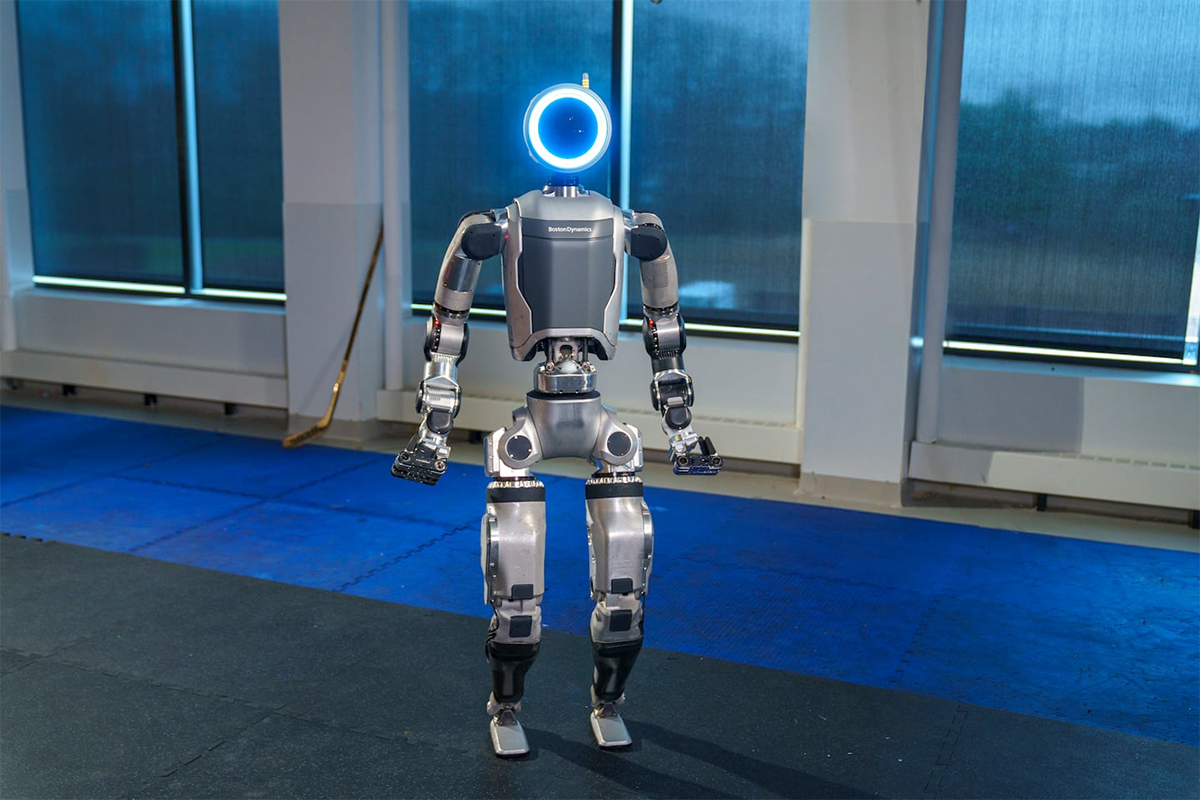
Which innovative technologies Hyundai introduced in the development of the Atlas – Image: Boston Dynamics
Technological Leaps: Hyundai's Influence on the Atlas Robot
Hyundai has taken a significant role in the further development of the Atlas robot through its acquisition of Boston Dynamics in 2021. Hyundai has integrated several innovative technologies and concepts into the development of the new Atlas, which have significantly improved both the performance and the possible uses of the humanoid robot.
1. Electric drives instead of hydraulic systems
One of the most important technological innovations introduced by Hyundai in collaboration with Boston Dynamics is the switch from hydraulic to electric actuators. This change allows the Atlas robot to move more precisely and quietly. Electric drives also offer greater reliability and require less maintenance than hydraulic systems because they are not prone to leaks, as hydraulic systems can be. This change not only improves the efficiency of the robot, but also makes it more flexible and robust for industrial use.
2. Artificial Intelligence and Computer Vision
Hyundai has also made significant contributions to the integration of advanced AI technologies. The new Atlas is equipped with computer vision, allowing it to sense its surroundings in real time and make precise movements. This technology is supported by machine learning (reinforcement learning), which helps the robot adapt to dynamic and complex environments. These capabilities are particularly important for industrial applications that require Atlas to operate in unstructured environments, such as factories or warehouses.
3. Movement planning and control
Another important technological advance is the improved motion control of the Atlas robot. Hyundai and Boston Dynamics have jointly developed model predictive control algorithms that enable the robot to predict its movements and adapt accordingly. This allows Atlas to perform complex maneuvers such as jumps or turns without losing efficiency or precision. This athletic intelligence makes the robot particularly versatile and suitable for demanding industrial tasks.
4. Human-machine interaction
Hyundai works closely with Boston Dynamics to develop technologies to improve human-machine interaction. This includes, among other things, embedded artificial intelligence and mobility platforms. The aim of these developments is to safely integrate robots like Atlas into work environments where they can work side by side with human colleagues. These technologies could help Atlas not only perform tasks autonomously, but also collaborate effectively with people.
5. Test environment and industrial applications
Hyundai is using its own production facilities as a test bed for the new Atlas robot. In these factories, the robot is tested for its ability to lift heavy loads, transport tools or perform dangerous tasks. These tests provide valuable data to optimize the robot for real industrial applications. In addition, Hyundai plans to use the robot in other areas such as logistics or even healthcare.
6. Synergy effects through collaboration
The collaboration between Hyundai and Boston Dynamics goes beyond technological innovation. Both companies leverage their respective strengths - Hyundai in automotive production and mobility technologies and Boston Dynamics in agile robotics - to create synergies. This partnership contributes to the development of technologies such as exoskeletons or mobile platforms that could have applications in both industry and everyday life.
Further development of the Atlas robot
Hyundai has made a decisive contribution to the further development of the Atlas robot through its strategic partnership with Boston Dynamics. The introduction of electric actuators, advanced AI systems and new movement algorithms have made the robot more powerful and versatile. Hyundai also uses its own production facilities as a test environment for the practical use of Atlas in industrial applications. This technological collaboration could not only revolutionize the future of robotics in industry, but also open up new avenues for human-machine interaction.
More about it here:
